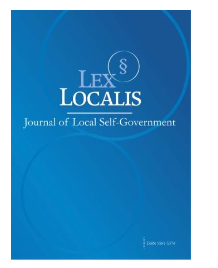CIRCULAR ECONOMY-BASED FASHION DESIGN: TOWARD ACHIEVING THE UN SUSTAINABLE DEVELOPMENT GOALS
DOI:
https://doi.org/10.52152/nf83d398Keywords:
circular economy, fashion design, sustainable product development, digital innovation, leadership, SDGs 9, 12, 13, qualitative case studyAbstract
This study investigates product design processes aligned with circular economy (CE) principles in the fashion industry. It focuses on the integration of digital technologies, the role of leadership, and enabling conditions that support sustainable design practices. This study is aligned with achieving the United Nations Sustainable Development Goals, particularly SDG 12 (Responsible Consumption and Production), SDG 9 (Industry, Innovation, and Infrastructure), and SDG 13 (Climate Action).The research draws upon two major conceptual foundations: Design for Circular Economy (DfCE) and Sustainable Product Development (SPD). It also incorporates contemporary leadership and institutional transformation theories to analyze how innovation is driven by organizational vision and collaborative ecosystems.This qualitative single-case study utilized grounded theory techniques to collect and analyze data from a pioneering sustainable fashion enterprise. Data were gathered through in-depth interviews with nine stakeholder groups, site observations, and document reviews. The analysis was enhanced by integrating Rasli et al.’s five-pillar sustainability model and leadership theory from Vasudevan et al. Findings reveal that CE-aligned product design is deeply iterative and modular, supported by technologies such as AI, blockchain, and 3D simulation. Visionary leadership and cross-sector partnerships serve as critical enablers of sustainable innovation. Human capital structure and stakeholder engagement also significantly shape the success of CE implementation in fashion.
The study proposes a replicable framework for integrating CE and SPD principles in fashion design. It highlights the importance of leadership, technological fluency, and organizational culture in driving systemic change towards sustainable innovation.This study provides empirical evidence and theoretical synthesis that advance the understanding of how circular design in fashion can directly contribute to the SDGs. It offers actionable strategies for fashion enterprises aiming to implement regenerative and future-ready design models.
Downloads
Published
Issue
Section
License
Copyright (c) 2025 Lex localis - Journal of Local Self-Government

This work is licensed under a Creative Commons Attribution-NonCommercial-NoDerivatives 4.0 International License.








